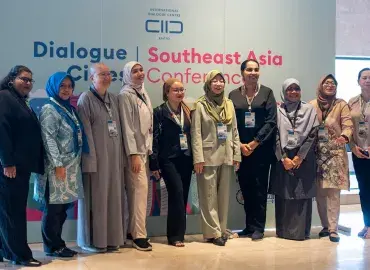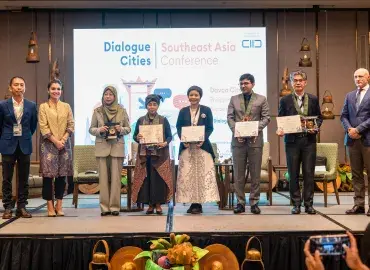The Power of Resilience: Dialogue Hero Promotes Conflict Transformation in Cambodia
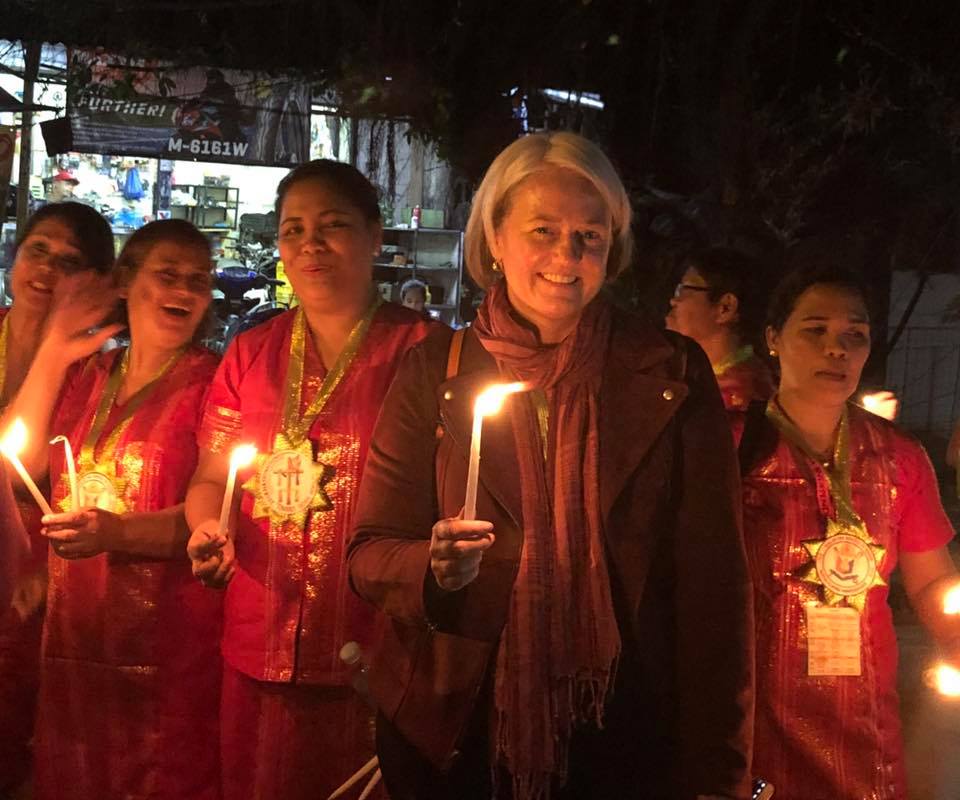
The Centre for Peace & Conflict Studies (CPCS)’ new Peace Museum sits in an old Khmer school in a small village on the edge of Battambang in northwestern Cambodia. Cows wander by this state-of-the-art facility as curious villagers and tourists stop in to learn more about Cambodia’s turbulent past and hopes for the future.
Emma Leslie, co-founder and executive director at CPCS, opened the museum with her husband and colleagues in October 2018 after traumatising visits to the Tuol Sleng Genocide Museum in Phnom Penh.
“The Genocide Museum is important in that it documents one point in history that was very painful, but it doesn’t talk about how people came out of that experience and went on with their lives,” Emma said. “Our Peace Museum shows Cambodians’ extraordinary capacity for resilience, reconciliation, rebuilding, and looking towards the future. It’s saying, ‘here are some terrible things that happened, and here is how we as a country are dealing with them.’”
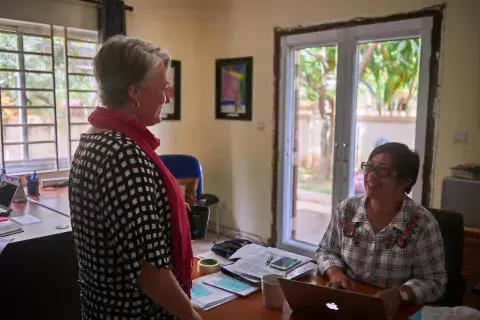
More than 1.5 million people, approximately 25 percent of Cambodia’s population, perished during the Khmer Rouge regime’s brutal genocide in the late-1970s.
Emma was just a child at the time, 7,000 kilometers away in rural Australia. She grew up learning about the genocide and moved to Cambodia in 1997 to work with the Campaign to Ban Landmines. After marrying local peacebuilder Soth Plai Ngarm and settling into her new life in Siem Reap, she founded the Centre for Peace & Conflict Studies in 2008 to help share her adopted home’s unique conflict transformation lessons with other countries in crisis.
“Cambodia experienced carpet bombings, genocide, civil war, a regionally led peace process, then an extraordinary peace agreement. It was the first independent country to be administered by the United Nations and then experienced this massive internationalism that happens to a country that was isolated for so long. It witnessed disarmament, demobilisation, reintegration, the return of refugees, elections, then a period of rehabilitation, reconstruction, relief, development, and now ongoing reconciliation. So we have 40 to 50 years of extraordinary history here that people have lived through and are somehow still resilient, hospitable, generous, and smiling. We chose to base the Centre here because Cambodia has so much to teach the world,” Emma said.

Before moving to Cambodia, Emma led intercultural exchanges between Australia, Sri Lanka, the Philippines, and Fiji and took a Responding to Conflict course in the United Kingdom where she met inspiring peacebuilders from around the globe.
“On one side of me was a man from Somaliland who had been in solitary confinement for 10 years and kept himself sane by tapping Morse code verses of the Qur’an on pipes to his fellow inmates. On the other side was a Catholic nun from Ireland who lived in Liberia and took care of kids who had limbs chopped off during the civil war. I decided in that moment that I wanted to spend my life working to end violent conflict,” Emma said. “During the course, I realised that alleviating poverty is important, human rights violations are important, but unless we deeply understand the root causes of conflict and strategise around addressing them, we won’t change anything.”
CPCS now leads master’s and PhD programmes in Applied Conflict Transformation with the Pannasastra University of Cambodia and undertakes various peacebuilding interventions in the Philippines, North Korea, Thailand, Myanmar, Sri Lanka, and beyond to enhance the sustainability and efficiency of regional peace work.
CPCS’s newest initiative, the Cambodia Peace Museum, focuses on reconciliation efforts. It was envisioned by Emma’s husband Ngarm, a Khmer Rouge survivor who spent 13 years as a soldier.
“As someone who had survived genocide, been a child soldier, then chose peace work, he has a unique story,” Emma said. “When Ngarm visited the Genocide Museum in 1999, he realised it wasn’t contributing to healing but was retraumatising people. The Peace Museum was born out of this problem of not knowing how to talk about the past in a way that helps you to move forward into the future.”
One exhibit documents Cambodia’s demining and disarmament efforts. Another focuses on the more than 5,000 Cambodian peacekeepers who have served in Eritrea, Mali, the Congo, Lebanon, and other conflict zones. Another highlights the annual Dhammayietra peace walk that began in the 1990s with Buddhist monks and laypersons venturing into parts of Cambodia that had been isolated for decades by mines or inadequate infrastructure.
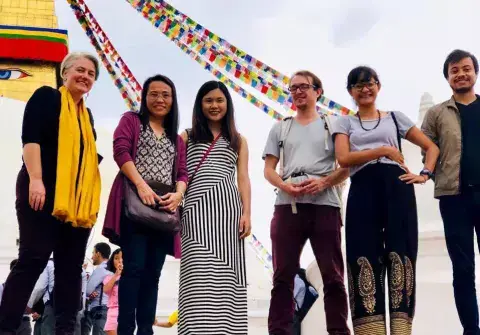
“One of the centerpieces of that exhibit is about the Cambodian monk Maha Ghosananda who said, ‘from deep suffering comes deep compassion.’ The Peace Museum offers us a chance to discuss what compassion looks like today and how we can foster it,” Emma said.
Young community leaders and monks serve as museum guides, leading visitors from one exhibit to the next and engaging with them to discuss ongoing conflict transformation.
“One of the guides recently said, ‘I’ve started to fall in love with my country by working at this place.’ It was extraordinary. That’s what we’re looking to foster -- positive, constructive nationalism. If we want to prevent future violence and dangerous forms of nationalism, we need spaces like this to talk about difficult issues in ways that help people move forward and that present positive stories of Cambodia without sanitising the past,” Emma said.
Looking towards the Centre’s and Cambodia’s future, Emma sees a need to foster critical thinking, emotional intelligence, and transformative leadership.
“Realising our abundances as humans, our creativities, and the wellsprings we have to share with one other unlocks abilities to find new pathways to peace and move people in positive directions. Right now we’re focused on spiraling. Not spiraling down negatively but spiraling upwards with energy towards a vision that empowers, excites, and inspires us.”


